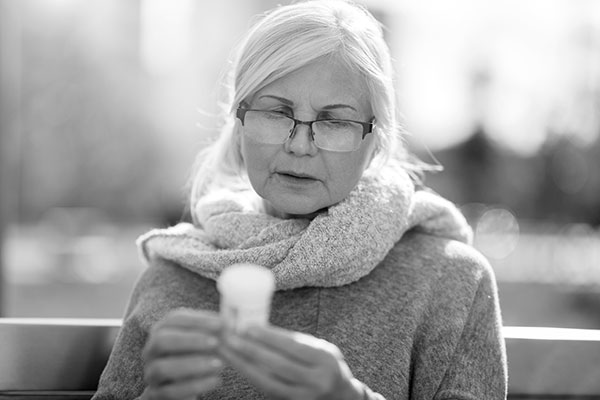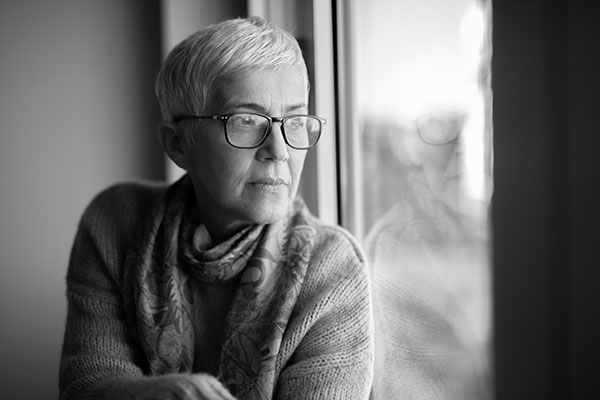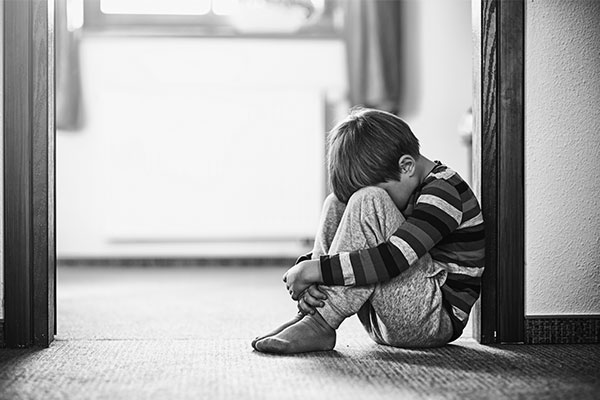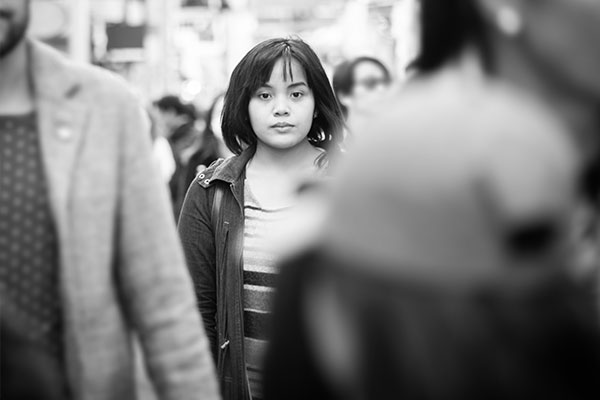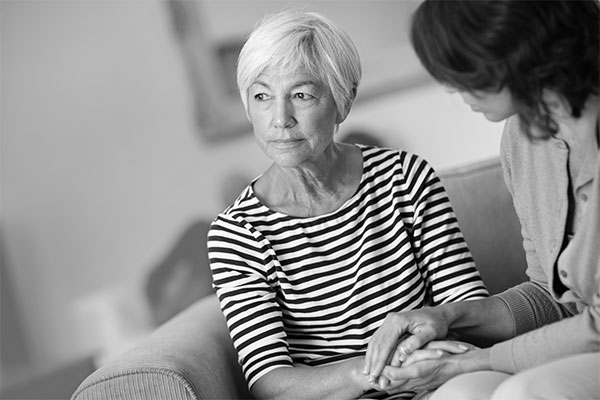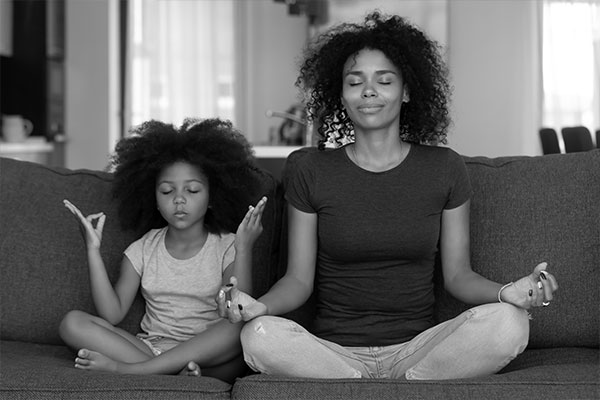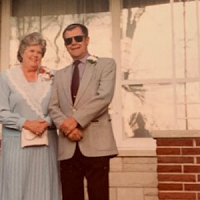Letting Children Share in Grief

A few decades ago, children often didn’t attend funerals. The thinking was that they should be sheltered from the pain of losing a loved one. And as Americans started living longer, the need to even broach the subject of death was delayed because many grandparents survived deep into their golden years.
But recently, the opposite view — that children should be as involved in the grieving process as adults are — has been taking hold, reflecting an increasingly common belief that children are better off when their grief is acknowledged and they are allowed to mourn in the company of relatives and peers.
Grief centers for children are one example: there are now more than 300 of these nonprofit counseling centers, up from 204 in 2002. And Donna Schuurman, the executive director of the Dougy Center for Grieving Children and Families in Portland, Ore., which helped establish these centers, estimated that there are at least 150 more peer-to-peer programs nationwide that serve a similar function. The rise of hospice care, which provides bereavement services for relatives, including children, has also played a role, as have grief camps for children.
“Twenty-five years ago, children were ‘invisible grievers,’ ” said Vicky Ott, executive director of Fernside, a nonprofit center in Cincinnati that served 1,300 children and adults last year. There was an attitude, she said, that they “are resilient, they will bounce back, we don’t need to talk to them about death. I think that’s changed a lot.”
David Horst’s experience bears that out. When his wife, Jennifer, was dying of leukemia in 2010, hospice workers encouraged him to prepare his children for her death. Two months before she died, Mr. Horst, an antiques dealer in Lebanon, Pa., who is now 40, began reading his 5- and 6-year-old books like “Lifetimes: The Beautiful Way to Explain Death to Children.” He didn’t hesitate to cry in front of them — in fact, he did it “all the time,” he said. And he took them to a support group at Hospice and Community Care in Lancaster, Pa.
Without the encouragement of the hospice workers, he would never have prepared his children that way, Mr. Horst said. But he came to believe that avoiding the subject would have been a mistake. “In the long run, it will be detrimental to the kids,” said Mr. Horst, who recently created a foundation in his wife’s honor. “You have to face it head-on.”
On the day of the burial, while he was sitting at his wife’s grave with his son on his lap, his son said: “You know, Dad, Mom will never suffer anymore, right? The cancer is gone.” That’s when Mr. Horst said he understood that his son had absorbed what he had been trying to communicate to him.
“I lost it,” he said. “They got all the suffering she was going through, or at least he did, and that now it’s over. That’s amazing.”
Trying to protect children from the pain of the death of a relative can actually make matters worse, some experts say. Children pick up “on the message the adults give verbally and nonverbally to ‘not go there,’ ” said Patti Anewalt, a grief counselor at Hospice and Community Care. “As a result, kids are extremely anxious.”
In contrast, a century or more ago, when illness, death and grief all took place at home, children learned to regard them as a natural part of life, said Alan Wolfelt, a psychologist who runs the Center for Loss and Life Transition in Fort Collins, Colo., which has trained a generation of grief counselors. “We included children in the experience because someone was dying in your home, next door or across the street,” he said.
But America has since become a “mourning avoidant” culture, he added, in part because many 40- and 50-year-olds still have living parents. And that longevity, he wrote in an e-mail, has “resulted in a tendency to overprotect children from the realities of grief and loss.” Indeed, death is such a foreign concept to some families, he said, that he has been told, “We just don’t do death.”
Grief camps like Camp Erin or Comfort Zone Camp, however, offer children a place where they can talk about a dead relative without feeling self-conscious or worrying about making schoolmates squeamish. And free support groups offered by nonprofit organizations like the Dougy Center and Fernside have helped to make grief more acceptable. As J. William Worden, a psychologist and one of the key investigators on the 1986 Harvard Child Bereavement Study, said, “The value of bereavement programs for kids is it helps them feel less ‘odd person out.’ ”
For the last four years, Jerry Goldsmith, a volunteer at New Hope for Kids, a grief center in Maitland, Fla., has listened to children ages 7 to 12 talk about parents and siblings they have lost. He has watched them create memory boxes in their relatives’ honor, or take out their frustration in the “hurricane room,” which is equipped with a boxing bag.
It has been a bittersweet experience for Mr. Goldsmith, a retired headhunter for financial services executives, because he lost his father to a heart attack in 1952, when he was 9. And for more than 20 years, he didn’t cry, he said. Now Mr. Goldsmith can’t help but wonder, he said, “How would my life have been different if I had some of today’s resources?”
Trying to avoid dealing with the loss of his father nearly kept him from becoming one, he added. “I was not going to get that close to anyone,” he said. And while he eventually had three children, he said, “I would have loved the opportunity to have fully grieved and started the healing process at age 9 instead of 28,” when he married.
In peer support groups, available for children ages 3 to 18, adults encourage conversation between children and let them mourn as they wish, even if that means recreating a burial with mini-coffins. That’s helpful because, as Ms. Schuurman of the Dougy Center noted, “kids are resilient, but they are not resilient in a vacuum. Kids do better when they see, 'Someone understands what I’m going through.’”
But peer support groups are not therapy. And if a child isn’t gradually improving, it might be worth having the child evaluated by a mental health professional, said Dr. Judith Cohen, a psychiatry professor at Allegheny General Hospital in Pittsburgh. Particularly after a month or two, she said, “if they are still struggling with the way the person died, rather than the fact the person died.”
Hospice centers are a good place to get help early on. They not only focus on the needs of dying patients, but also offer bereavement services for up to a year after the patient’s death.
In 2010, 1.6 million patients received hospice care in the United States, up from 25,000 in 1982, when the Medicare hospice benefit was created. It used to be that after a death, children’s needs were not addressed, said J. Donald Schumacher, the president of the National Hospice and Palliative Care Organization. “But now they are identified as part of the care plan in hospice, and their needs are attended to immediately during hospice.”
Moreover, many funeral directors, influenced by grief experts like Rabbi Earl Grollman and Dr. Wolfelt, now have explicit conversations with parents about whether children will attend services. Some have set up children’s lounges to make it clear that children are welcome, and they distribute pamphlets with advice for parents, like “confirm that it’s all right to be sad and to cry.”
Bob Rosson, president-elect of the National Funeral Directors Association and the director of the Waller Funeral Home in Oxford, Miss., said that he tells those who are reluctant to bring their children: “If you deny them the chance to come to a funeral service, you don’t have the option of coming back next week and doing it right.”
Other funeral directors, like Ashley Cozine at Broadway Mortuary in Wichita, Kan., offer tours of the facilities for children, in an effort to demystify death. Scott Macy, a funeral director at Hultgren Funeral Home in Wheaton, Ill., said his hope was that this would encourage discussion between parents and children. “An atmosphere of openness is necessary for the next generation to move forward appropriately in dealing with death,” Mr. Macy said. “We’re hoping we are setting a bit of example by offering a tour that says: ‘Hey, death is a part of life. Everyone will have to deal with it.’ ”
A couple of years ago, Sarah Anderson, 52, a mother of two, organized a tour of the Broadway Mortuary for about 30 elementary-school children. “It was an opportunity for them to learn about death in a nonemotional, factual way,” she said. “Then if they do have to experience it, it won’t be as overpowering.” In a sign of changing times, not one of the parents declined to sign the permission slip.
By contrast, in 1982, when the Dougy Center opened, the reaction among many was not positive. Beverly Chappell, a founder, said people asked, “Why would you want to cram death down kids’ throats, for crying out loud?”
As Rabbi Grollman, 87, who wrote the influential 1967 book “Explaining Death to Children,” said, “Thirty years ago, there was the idea that children couldn’t understand.” But now, after a death in the family, many parents allow children to see their grief, he added. “We try to avoid fairy tales and half-truths.”
Still, for many parents, death is an overwhelming experience, one that is difficult to discuss with their children.
Pamela Gabbay, director of three Mourning Star centers, who also oversees a Camp Erin in Palm Desert, Calif., said she recently had a call from a mother in despair. A few months earlier, the woman’s husband, a frequent traveler, had died in a car accident while he was on a trip, and she had not yet told her children. Ms. Gabbay, who helped her find the words to tell them, said that often people haven’t been forced to talk about death, “because nobody significant in their life has died.”
And unlike the sex talk, the death talk hasn’t been enshrined in the book of parenting musts. Andy McNiel, the first executive director of the National Alliance for Grieving Children, a network for bereavement professionals and volunteers, said, “We don’t give them honest information,” in part because of a sincere desire to protect our children.
But even if a child in kindergarten is excluded from a grandfather’s funeral, or a teenager isn’t told that a mother died by suicide, they often know more than their parents give them credit for. And as Mr. McNiel said he often asks parents, “If they already know the reality of what’s going on, would you prefer they deal with it with you — or alone?”
How to Break Bad News
ALAN WOLFELT, a grief counselor and author of dozens of books about loss, likes to say, “Anyone old enough to love is old enough to grieve.”
But what’s the best way for grieving parents to explain to children that their father or grandmother is gone? It’s not easy, especially considering that parents are inclined to protect children from pain of any kind, let alone the ultimate type. A few tips from experts:
- Prepare children for what they’ll see at funerals, said Donna Schuurman, the executive director of the Dougy Center for Grieving Children and Families in Portland, Ore., particularly if there’s going to be an open coffin. And make sure to explain why rituals are important. Tell them that it’s a ceremony where “friends and family come together,” she said, and “we’ll be sad, we’ll show pictures of Daddy.”
- Avoid confusing euphemisms like “Grandma passed away” or “Mom went to sleep,” lest a child fear bedtime. Sesame Workshop has videos that parents can watch with preschoolers to help them grasp the permanence of death. (One features Elmo wanting to call his dead uncle.) Experts also suggest offering an explanation like this: “When a person dies, his or her body stops working. The heart stops beating and the body stops moving, eating and breathing.”
- What if your children ask whether you could die? One answer recommended by Rabbi Earl Grollman, a pioneer in the field of death and dying, is to tell them that “anyone can die at any time,” but “I’m healthy and I expect to live a long, long time.”
- If a loved one died by suicide or was killed, straight talk can be especially difficult. But it is still necessary, said Andy McNiel, the executive director of the National Alliance for Grieving Children. He asks parents, “Can you guarantee that your child will never find out the truth for the rest of their life?” And invariably, he said, “I’ve never had anyone say, ‘I can keep that truth.’ ”
- Take the child’s age into consideration, use straightforward language and let the child’s questions guide the discussion. As Rabbi Grollman suggests: “Find out what a child wants to know and when he or she wants to know it. I wouldn’t rush in.”
This article, written by Catherine Saint Louis, was published in the New York Times on September 12, 2012.





